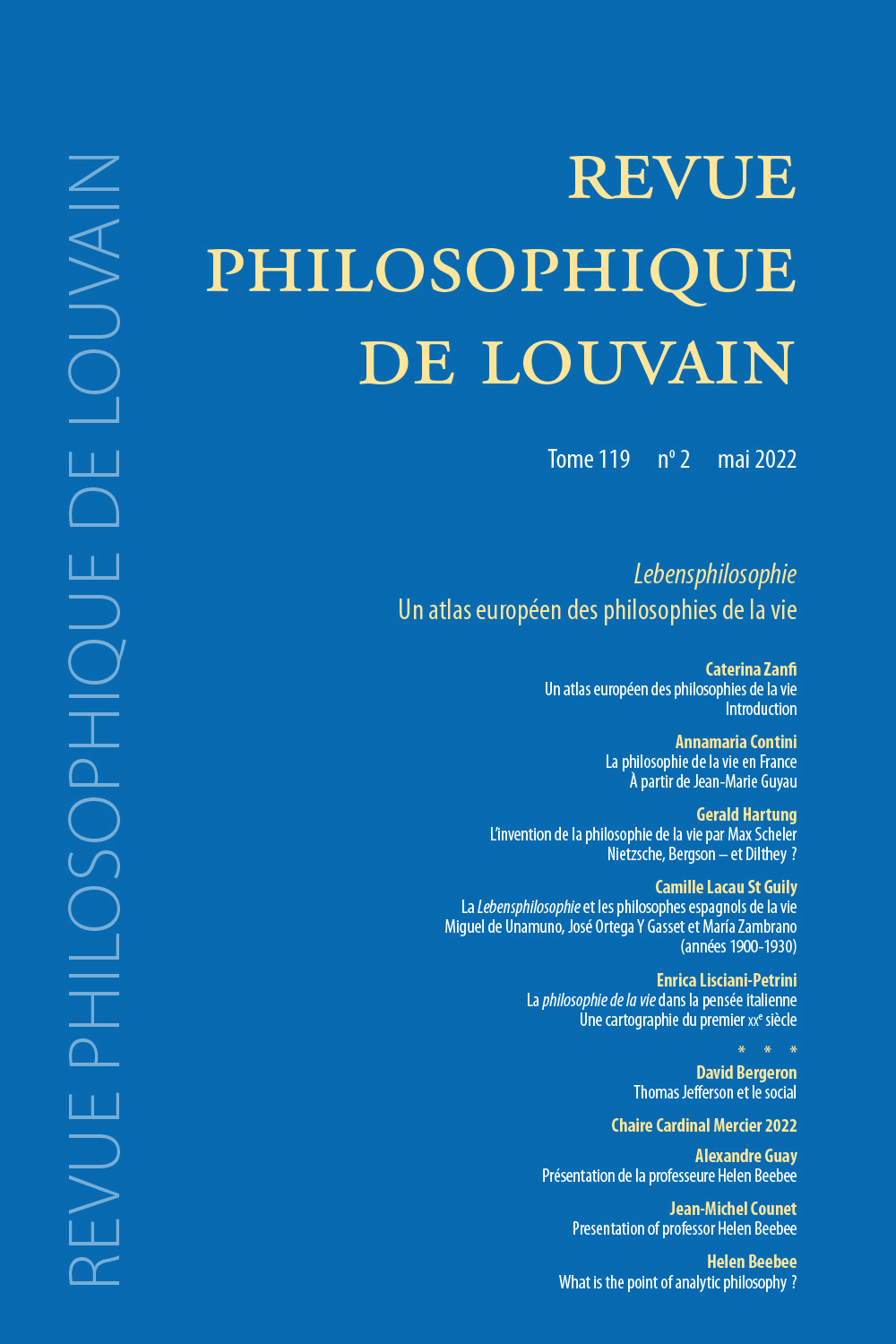 previous article in this issue previous article in this issue | next article in this issue  |

Preview first page |
Document Details : Title: Syntaxe motrice et stylistique corporelle. Réflexions à propos du schématisme corporel chez Merleau-Ponty Author(s): MAZZÙ, Antonio Journal: Revue Philosophique de Louvain Volume: 99 Issue: 1 Date: février 2001 Pages: 46-72 DOI: 10.2143/RPL.99.1.623 Abstract : La question du schéma corporel a, chez M. Merleau-Ponty, une portée considérable. Elle occupe une position à ce point cardinale (de la Structure du Comportement au Visible et l'Invisible) que l'on peut, à travers son examen, retrouver et ré-articuler nombre de grands thèmes du philosophe: l'ouverture de l'espace comme espace égologique, les rapports de schéma corporel à schéma corporel qui soutiennent, dans l'implicite, une telle ouverture, la structuration du comportement et de la pensée par champs de potentialités rétentionnelles et protentionnelles, l'unité de l'expressivité humaine, la réflexivité qui s'inaugure dès la vie du corps et les espaces de liberté qu'elle s'y ménage. Cette étude présente, par la voie de descriptions phénoménologiques, une conception résolument dynamique du schématisme corporel, à l'écart donc de toute identification entre schéma et image (ou représentation) du corps; le schéma corporel est conçu comme syntaxe perceptivo-motrice au sens d'une légalité immanente qui lie l'espace et le temps de l'action. Si la «règle» du mouvement est à chaque fois singulière, elle s'adosse cependant aux habitus (personnels et sociaux) qui donnent une forme typique, un style, à la mobilité de chacun. Le beau, où l'harmonie est prise pour seule fin, et le sublime de la danse, où joue la mise en suspens de la règle elle-même, sont les manifestations les plus éclatantes du mouvement libre. The question of the bodily schema is of considerable importance in M. Merleau-Ponty. It occupies a position of such key importance (from the Structure of Behaviour to the Visible and the Invisible) that, by examining it, one can rediscover and rearticulate numerous major themes in the philosopher: the opening of space as egological space, the relationships of corporal schema to corporal schema which support implicitly an opening of this kind, the structuring of action and of thought by fields of retentional and protentional potentialities, the unity of human expressivity, the reflexivity which starts with the life of the body and the spaces for freedom which it arranges for itself. This study presents, by means of phenomenological descriptions, a resolutely dynamic conception of corporal schematism, thus separate from any identification between schema and image of the body; the bodily schema is conceived as a perceptivomotory syntax in the sense of an immanent legality which links the space and the time of an action. If the «rule» of movement is singular on each occasion, it leans nonetheless on the (personal and social) habitus which give a typical form, a style, to the mobility of everyone. The beautiful, where harmony is taken for sole end, and the sublime in dancing, in which the suspension of the rule itself plays a role, are the most striking manifestations of free movement. (Transl. by J. Dudley). |
|


